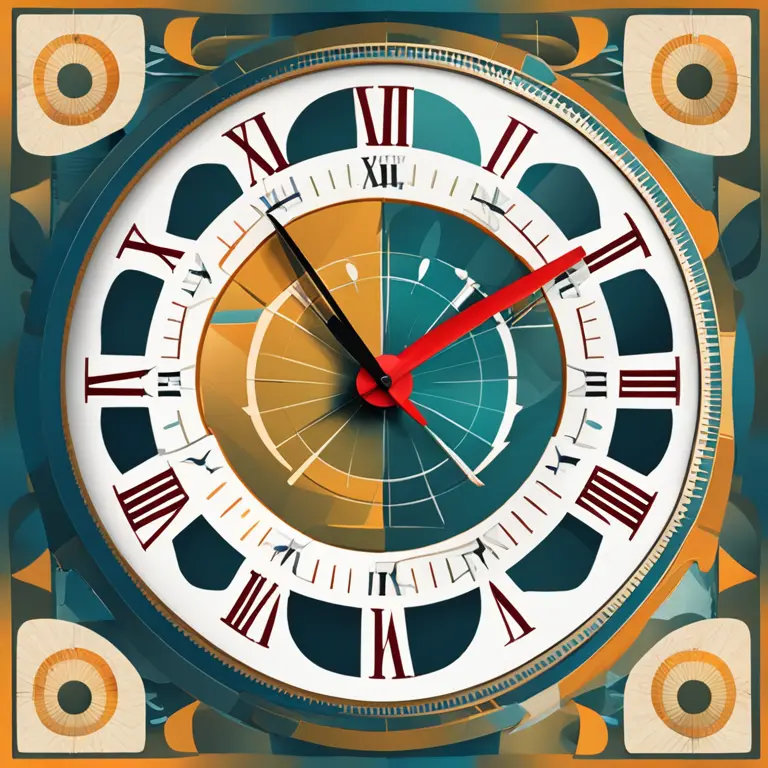
Rhythms of Life: Examples of Biological Cycles
Delve into the fascinating world of biological rhythms as we explore how their patterns influence daily life, health, and behaviors.
article by Adrian Wallace
Introduction to Biological Rhythms
Biological rhythms are the natural cycles that govern the functioning of living organisms. These rhythms sync with environmental cues like light and darkness or temperature changes, and ensure the optimal timing of physiological processes. Understanding these rhythms offers powerful insights into how organisms adapt and thrive in sync with the Earth's cycles. From the human sleep-wake cycle to the migration patterns of birds, these rhythms dictate the dance of life that plays out in every living being. Learning about these patterns not only piques curiosity but also can lead to a more harmonious lifestyle in tune with our own internal clocks.

The Circadian Rhythm
Perhaps the most well-known biological rhythm is the circadian rhythm, which runs on a roughly 24-hour cycle. This encompasses the daily fluctuations of a body's internal clock that regulates sleep, alertness, hormone levels, and other bodily functions. These rhythms are deeply rooted in human DNA, and disruptions can lead to various sleep disorders, mood disturbances, and metabolic issues. As we progress through 2024, understanding the impact of technology and lifestyle on circadian rhythms is increasingly crucial for maintaining personal health and well-being.

Ultradian Rhythms
Within the span of a single day, organisms experience shorter cycles called ultradian rhythms. These last less than 24 hours and include the human heartbeat, breathing patterns, and the 90-minute cycles of human sleep, during which individuals cycle through stages of REM and non-REM sleep. Paying attention to ultradian rhythms could hold the key to optimizing productivity and energy levels throughout the day, by aligning work and rest periods with these natural cycles.

Infradian Rhythms
Extending beyond a day, infradian rhythms constitute cycles that take place over a period longer than 24 hours. One prime example is the female menstrual cycle, which modulates physiological processes on roughly a monthly basis. Another is the seasonal breeding patterns observed in various wildlife species. Recognizing and respecting infradian rhythms can enhance understanding of fertility patterns, mood variations, and seasonal affective disorders, especially as climatic and environmental factors evolve in the coming years.

Tidal and Lunar Rhythms
Some biological rhythms are influenced by the moon and tides. Tidal rhythms, experienced by coastal marine life, are synced with the ebb and flow of the tides, governing behaviors like shellfish activity. Lunar rhythms, typically monthly, align with the moon's phases, dictating the reproductive patterns of many marine animals and even influencing human behavior in subtle ways. As ecological conditions shift, the study of these rhythms in 2024 and beyond becomes vital for conservation efforts and understanding the intricate web of life.
Annuities in Plants and Animals
On a yearly basis, annuities impact various species, including the migration of birds and the hibernation of bears. In plants, annual rhythms control flowering, fruiting, and dormant phases. These rhythms align closely with environmental changes and have profound implications for ecosystems and agriculture. Perturbations in annual cycles due to climate change are areas of intense study, seeking to anticipate and mitigate the effects of a shifting global ecosystem.
Published: 1/30/2024
Modified: 1/30/2024
More predictions
Come back here soon to learn more about yourself and your future


Is Biorhythm Compatibility a Fact or Myth?
Delve into the realm of biorhythms to discover if the science of bio-rhythmic compatibility holds water in harmonizing relationships.


Biorhythm Compatibility: The Sync of Life Rhythms
Discover the role of biorhythm compatibility in relationships, and how syncing life rhythms can influence personal connections.


Birthday Biorhythm Compatibility: Key to Harmonious Relations
An insightful guide into how birthday biorhythm compatibility influences personal interactions and relationships.